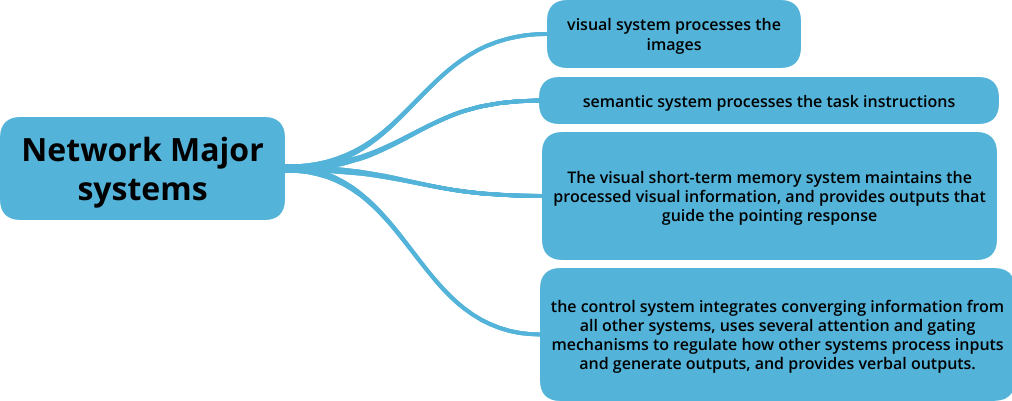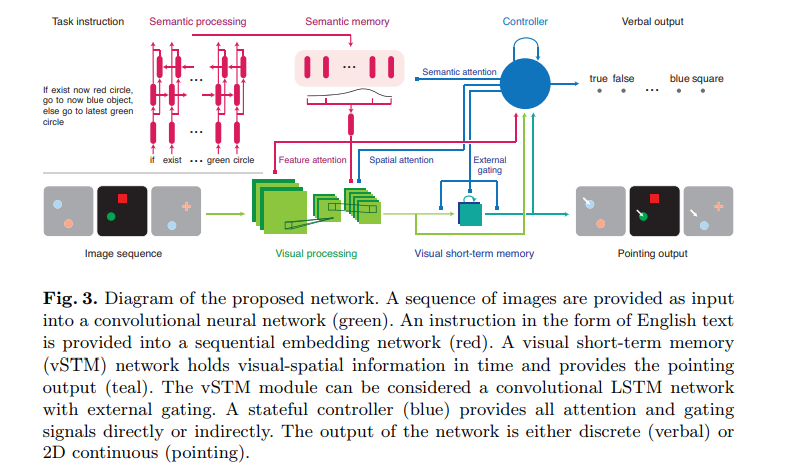Karthik Tech Blogs
Summary - A Dataset and Architecture for Visual Reasoning with a Working Memory
Link: Google AI
Paper: Available here
This paper from Google Brain Team was about visual question answering , visual reasoning. This paper addressess the shortcomings of Visual Question Answer(VQA) dataset with additional parametric information such as time and memory. Additionally, there is a Reasoning Agent whose task is as quoted from the paper.
A reasoning agent must remember relevant pieces of its visual history, ignore irrelevant detail, update and manipulate a memory based on new information and exploit this memory at later times to make decisions.
An Artificial dataset called COG that exercises visual reasoning in time was created and used for training this model.
The COG dataset is based on a programmatic language that builds a battery of task triplets: an image sequence, a verbal instruction, and a sequence of correct answers.

This model focuses on combining both the sematic knowledge and visual modules.By employing a stateful controller we can harmonize visual attention and memory for correct performance of visual task.
Finally, we introduce a multi-modal recurrent architecture for visual reasoning with memory. This network combines semantic and visual modules with a stateful controller that modulates visual attention and memory in order to correctly perform a visual task.
Performance outcomes.
We demonstrate that this model achieves near state-of-the-art performance on the CLEVR dataset. In addition, this network provides a strong baseline that achieves good performance on the COG dataset across an array of settings.
COG Dataset
The dataset contains triplets of a task instruction, sequences of synthetic images, and sequences of target responses (see Figure 1 for examples). Each image consists of a number of simple objects that vary in color, shape, and location. There are 19 possible colors and 33 possible shapes (6 geometric shapes and 26 lower-case English letters). The network needs to generate a verbal or pointing response for every image.
The network
General network setup
The Network consists of four major systems.

Network workflow Diagram from the Paper.


REFERENCE:
- https://ai.google/research/pubs/pub47145